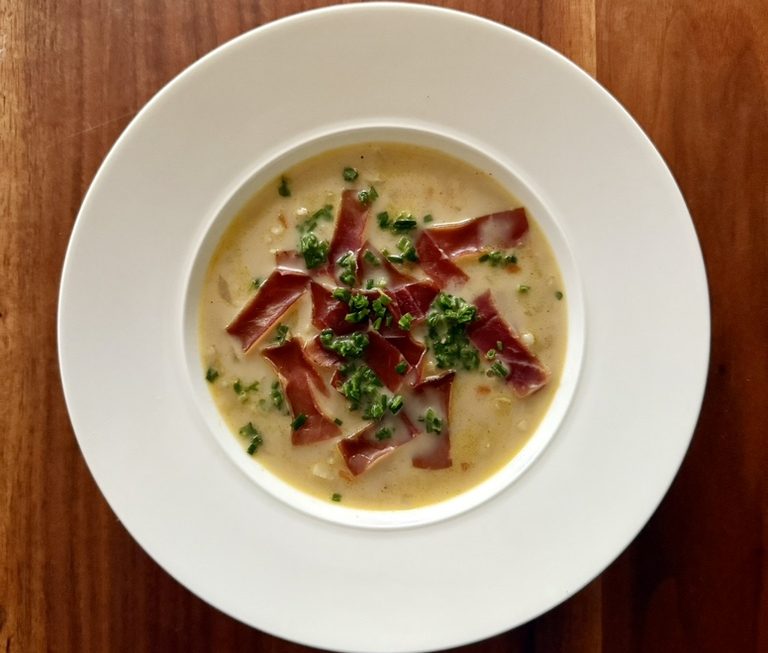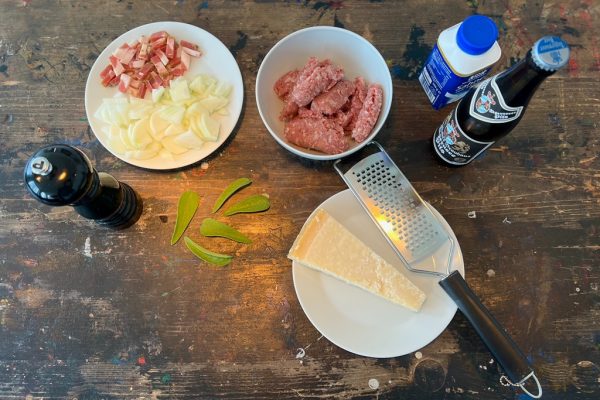So far, we have described two dishes from Switzerland, namely Bernese Rösti and Zürcher Geschnetzeltes. In the blog’s tag cloud, a country currently needs at least three recipes to make it onto the list, so we are adding another one here: Bündner Gerstensuppe, a Swiss pearl barley soup.
Switzerland consists of 26 different regions, known as cantons. Graubünden is the largest of these, and its capital, Chur, is the oldest city in Switzerland. It is also the only trilingual canton in Switzerland. Of the four national languages – German, French, Italian and Rhaeto-Romanic – all except French are spoken there. In Rhaeto-Romanic, the Graubünden barley soup is called ‘Schoppa da giuotta’ and many families have their own recipe for it.
‘Schoppa’ means soup, “giuotta” is barley – more precisely: “Rollgerste”. This is one of the oldest processed cereal products in the world. After harvesting in late summer, it is dried, polished and ‘rolled’ (i.e. ground all around) so that it can be stored over the winter. What is known as pearl barley is (almost) the same thing. So its ideally “Rollgerste” or (rather course) pearl barley that you need for this soup. It has a mild, nutty flavour, is high in fibre and very nutritious.
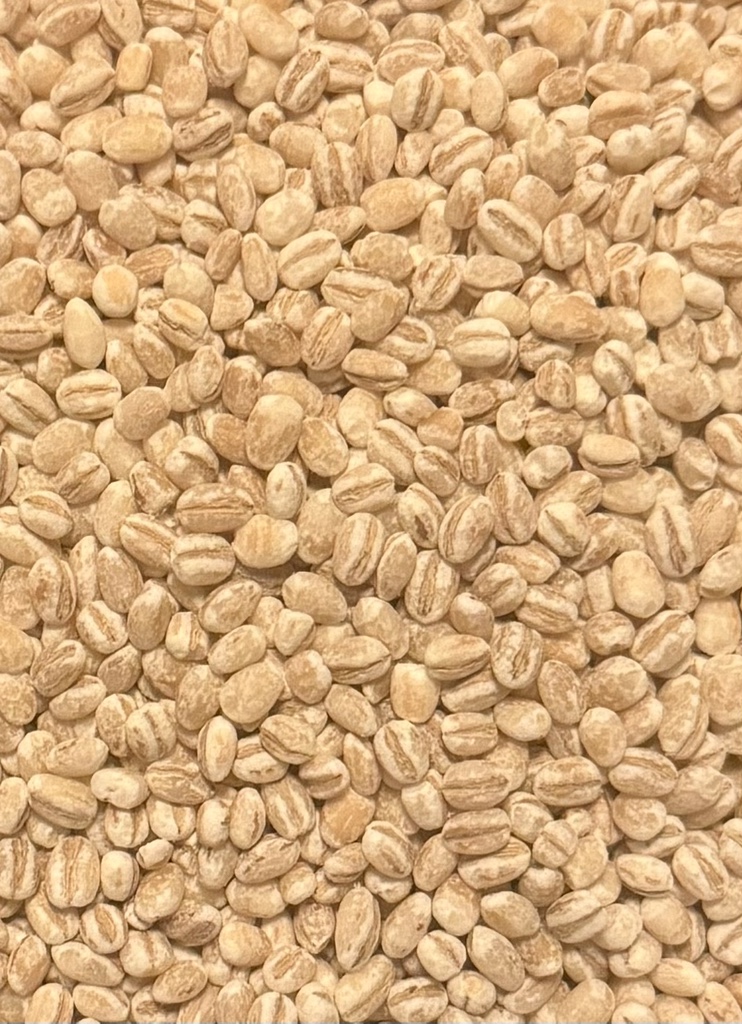
This soup can be prepared as a vegetarian or vegan dish. Today, we will explain how to prepare it the classical way using beef stock. If you prefer, you can use vegetable stock instead.
We have already explained how to cook bone-based stock, for example in detail here.
For our soup, we use beef bones and a marrowbone, as well as classic soup vegetables: carrots, celeriac, parsley root and leek. We also add an onion with its skin, bay leaves and juniper berries. The vegetables are washed and then roughly chopped before being slowly brought to the boil in cold water together with the bones and spices.
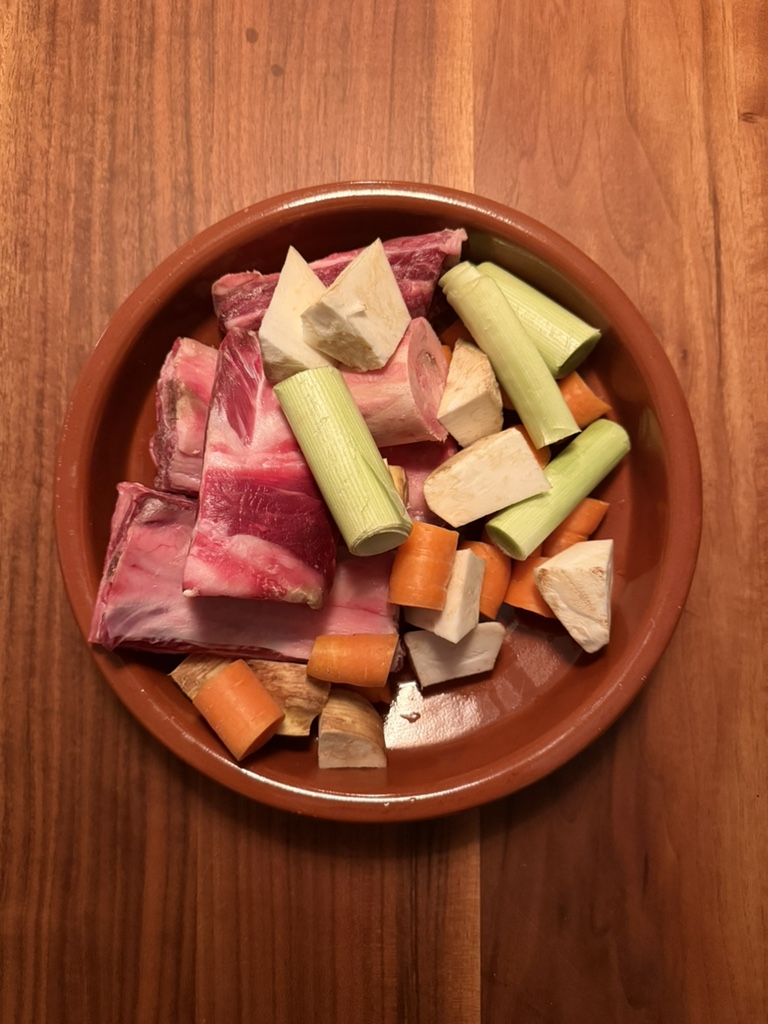
Skim off any foam that forms on the surface and simmer the beef stock gently for at least 2 hours – longer is better. In our household, this is done the day before and the pot is simply left to cool overnight. The next day, you can easily remove the fat that has gathered and solidified on the surface, then strain the stock through a fine sieve.
We also soak the pearl barley in water overnight, which makes it cook faster. This isn’t mandatory, but it saves time when cooking later on.
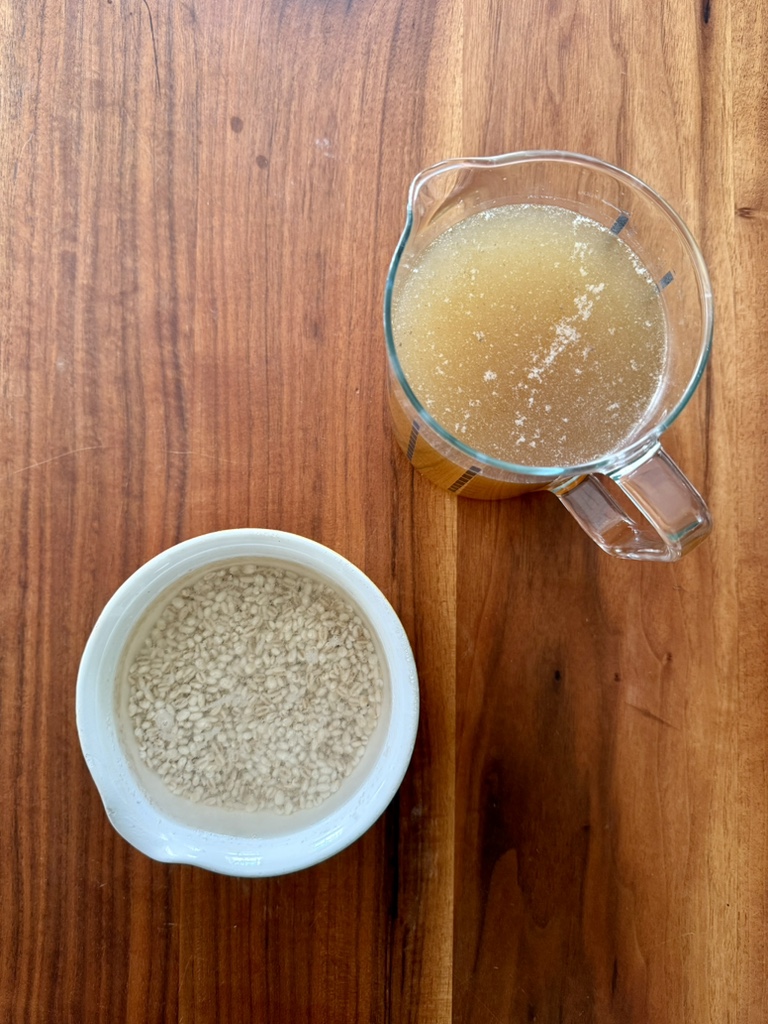
Next, peel and wash the vegetables, then chop them into small cubes: onion, celeriac, parsley root, carrot and leek. Some recipes also call for potatoes and/or bacon, but we prefer a slightly more refined preparation.
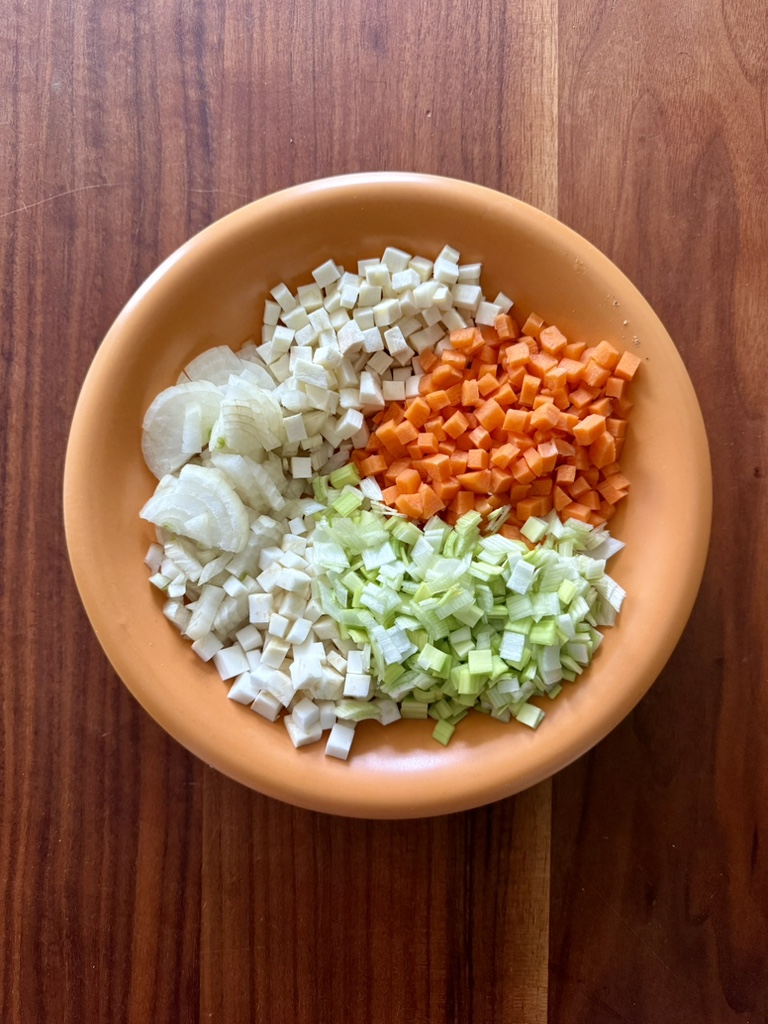
Melt butter in a large saucepan over medium heat. When it starts to foam, gently sauté the prepared vegetables while stirring. They should release their flavours but not take on any colour. This takes 3–4 minutes.
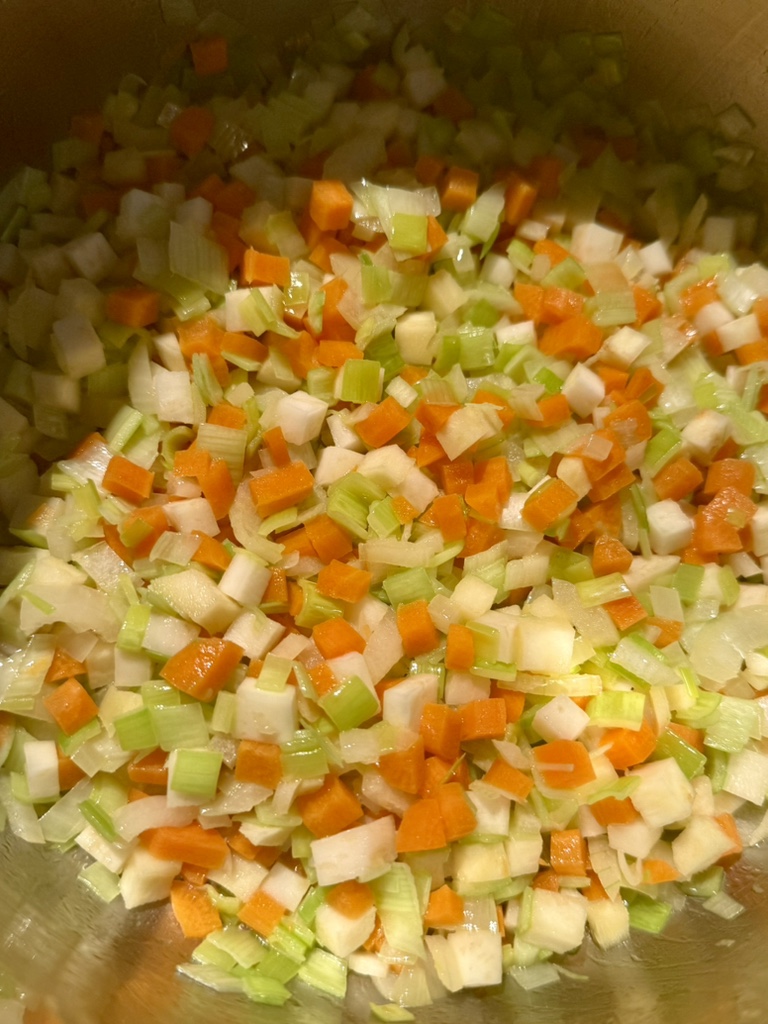
Add the pearl barley – without the soaking water, of course – and pour in the stock. Add a bay leaf. Bring to the boil and then simmer gently over a low heat until the barley is soft but not falling apart. This should take about 45 minutes. We do not put a lid on the pot, as we want the stock to reduce and become more intense in flavour.
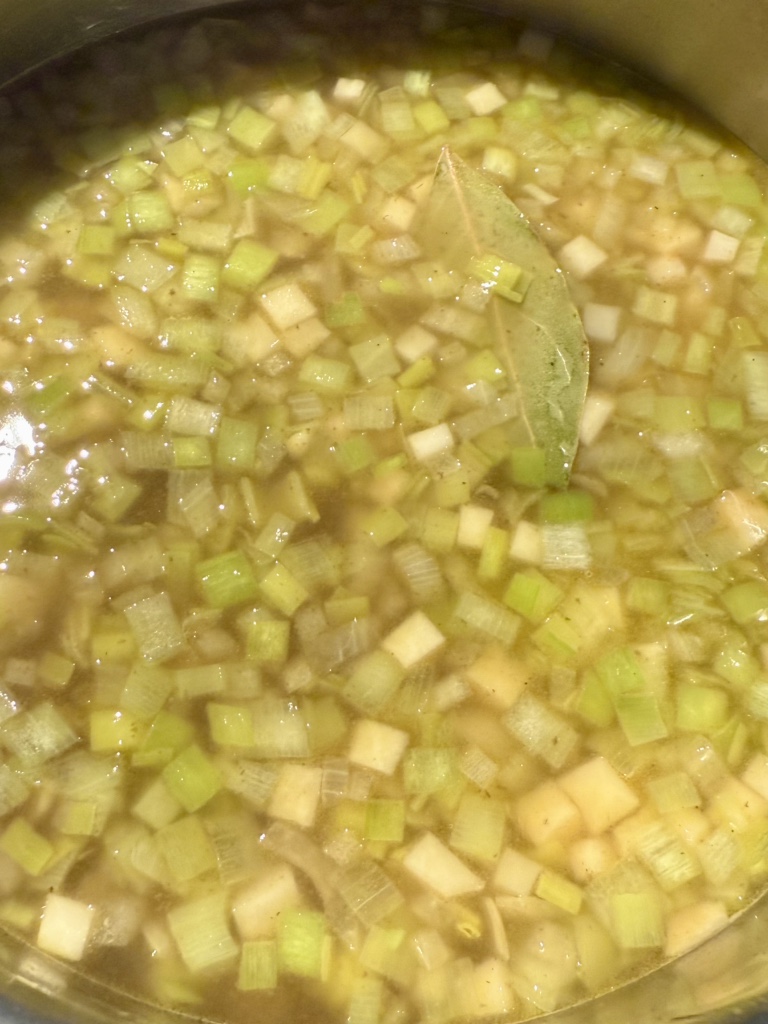
You can enjoy the soup with or without cream – we opt for a little crème fraîche because of its slight acidity. We also thicken the soup with egg yolk, a process known as liaison. However, once the egg has been added, the soup must not be brought to the boil again, otherwise it will curdle.
We add chives and thinly sliced Bündnerfleisch to the soup. The latter is made from lean muscle meat that is salted, seasoned and air-dried for several weeks. This process causes the meat to lose around half its weight, giving it a deep red colour, a concentrated flavour and a firm, tender texture.
Many recipes recommend using cubes of Bündnerfleisch to be cooked along with the dish, but we prefer the delicate, individual flavour that comes from adding it at the end.
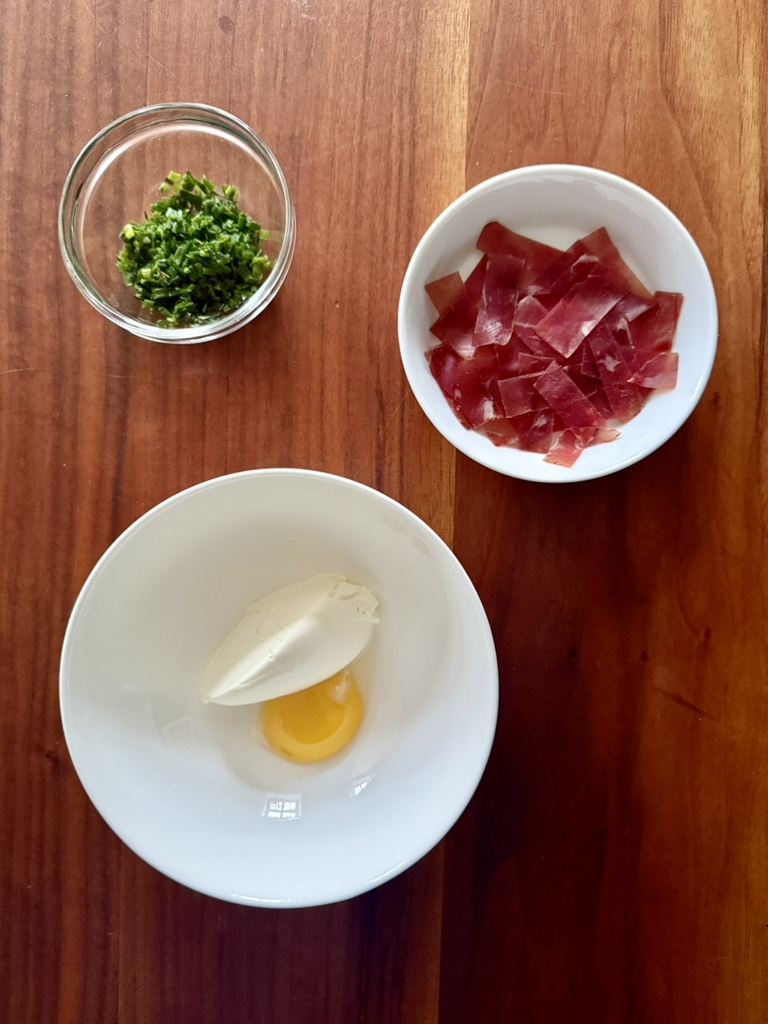
Mix the crème fraîche and egg yolks in a bowl, then add half a ladleful of the soup. This will further liquefy both ingredients and slowly bring them up to temperature. Pour the mixture into the pot and mix everything thoroughly. Finally, season to taste with salt, pepper and a little nutmeg.

Enjoy.
And may the taste be with you.
Ingredients (for 4 plates or 2 people as a main meal):
For 2 litres of stock (approx. 1.5 litres of soup at the end):
1 kg beef bones
1 beef marrow bone
400 g soup vegetables (celeriac, carrot, parsley root, leek)
1 yellow onion with skin
2 bay leaves
1 tbsp juniper berries
2.5 litres water
For the soup:
1 tbsp butter
Approx. 50 g each of onion, celeriac, parsley root, carrot and leek, finely diced
(or a combination of approx. 250 g root vegetables of your choice and availability)
100 g pearl barley (we soak it)
1.5 l beef or vegetable stock
1 bay leaf
1.5 tbsp crème fraîche (or 150 ml sweet cream)
Optional: 1 egg yolk
Salt, pepper and nutmeg to taste
4 tbsp chives, finely chopped
40 g Bündnerfleisch, finely sliced
